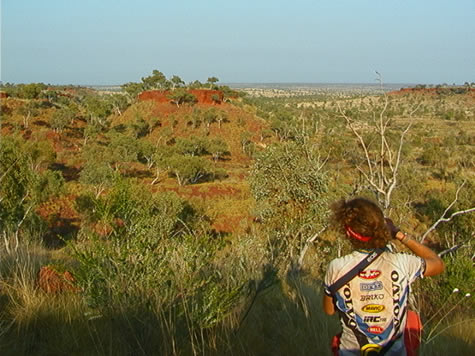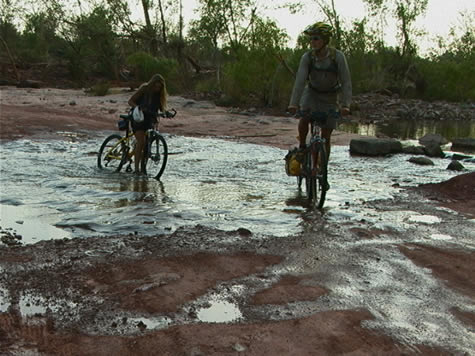THEME: Victoria River District
SUBJECT AREAS: Geography
TOPIC: Geography of Victoria River Basin
The land changed quickly on the way north from Lajamanu today. It was quite noticeable that we’d left the Tanami Desert behind as the spinifex-dotted expanses gave way to escarpment country, covered with Mitchell and kangaroo grass.

We are presently in the western half of the Barkly Region of the Northern Territory. It is the transition zone from the green of the Top End to the red ochre of the centre. The rich Victoria River pastoral district we have entered is predominately cattle country and well suited for it. Imagine our amazement as we crossed Gordy Creek and there was actually water in it! So many of our campsites have been dry over the course of the last several weeks. When we crossed the Victoria River (full of water, I might add!) on our way into Kalkaringi, it was almost sensory overload as water has been so scarce.
As might be expected in this geographic transition zone between the tropical Top End and the arid centre, the rainfall in this region varies markedly, from around 400 mm in the south to well over 1000mm along the coast. Rainfall in the Victoria River district falls somewhere in between, with this spring being an exceptionally wet one (see the photos of the police station; one taken in March this year, the other taken today from the same camera angle). The local citizens in Kalkaringi speak of large thunderstorms developing in the late afternoon and releasing torrents of water. The country we’ve been riding through is a testament to that fact the grass and other vegetation are significantly greener this time of year compared to years past.

Sandstone gorges, high cliffs and flat-top ranges await us in the next few days as we travel toward Gregory National Park. We have definitely entered a new geographic region! And, this evening as we crossed the Victoria River leaving Kalkaringi, we discovered a made-to-order water slide! We bailed off the bikes into the cool rushing water as it tumbled over large rock surfaces in the roadbed.
Suggested activities: Compare rainfall amounts and vegetation in your region. What types of plants are best suited to your climate? Does your region’s geography have an impact on the local economy agriculturally speaking, and, if so, how is it impacted? Study the effects of drought in your area. Investigate what is done to compensate for dry seasons.
April